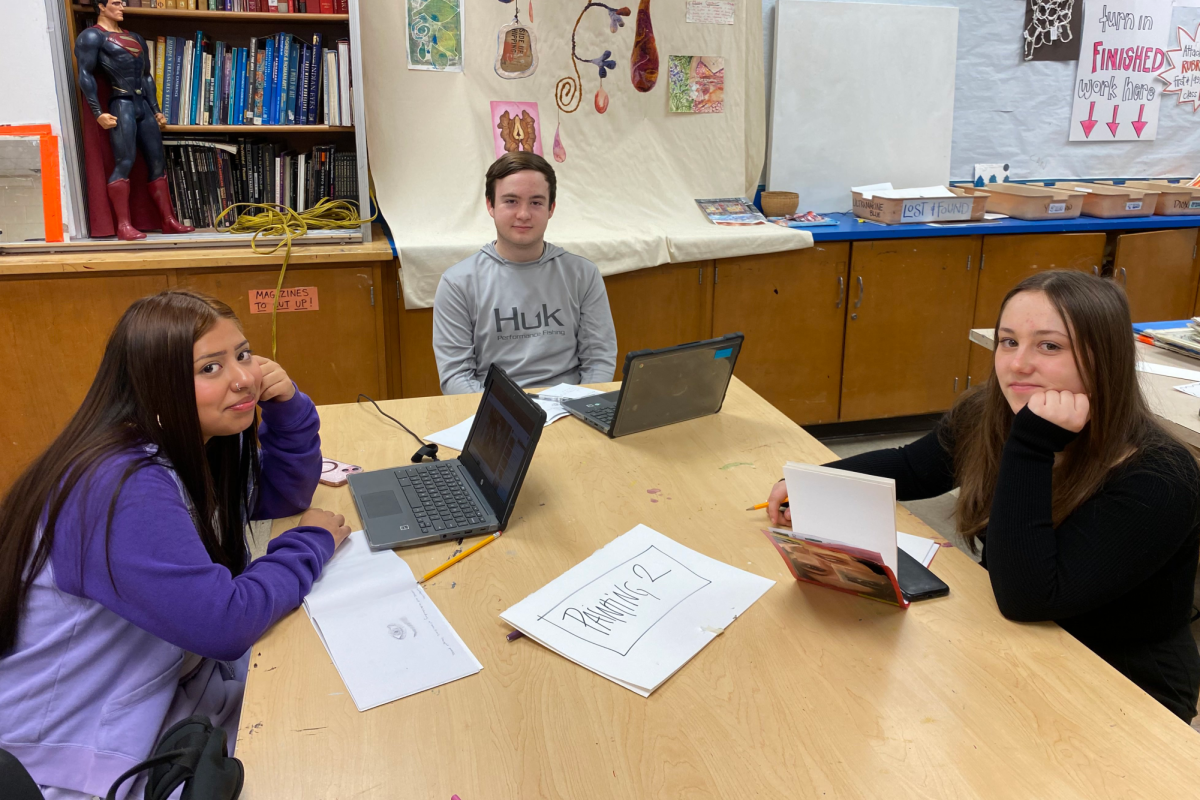Police in schools hurt more than they help
November 24, 2014
What do South, airports, and prisons all have in common? Each of them includes resident police officers.
Defenders of a police presence in schools argue that School Resource Officers (SROs) are role models for students and more akin to social workers than cops.
In my experience, and in that of other South students, that is not the case. There is already a large divide between students and school staff. SROs, instead of providing a positive image of law enforcement, arrest students for behavior that usually does not warrant any legal process and drive students into the prison system, a phenomenon commonly called the ‘school to prison pipeline.’ Their presence, as a result, widens the existing gap between students and school staff.
“There have been times where I have seen police abuse their power,” junior Iris Serrano Castro said. “If kids have had home situations where police have just barged in and made a scene, for students it gives them that intimidating feeling that maybe all police can be like that.”
These officers are also typically accountable first to the police department, and then to the school. An SRO could conceivably overrule a school administrator that wishes to prevent a student from being arrested.
Arrests are almost three times more likely to happen in schools with SROs, but strangely, SROs have little effect on rates of reported crime in schools. Recent efforts to scale back law enforcement in schools have resulted in students reported crime actually decreasing. Funding for SROs has decreased almost 90% since 2002, and student reported violent crime and theft has decreased 22%.
Many school arrests are for minor and mostly non-violent behavior, such as disrupting class, swearing, or small scuffles. In one instance in Lee County, Florida, two students were issued $57 citations for not wearing bike helmets while riding their bikes to school.
According to one of the student’s fathers, the experience taught the kids to distrust the police. “I listen to [the children] and they don’t like the cops. They want to stay away from them.” he told the Florida News Press.
SROs also are a major contributor to the school to prison pipeline. Being arrested while in school can make it difficult to later get a job and usually means suspension or expulsion from school. Being suspended or expelled often creates a sense of alienation from the school system and authority in general, and contributes to dropping out.
In fact, the National Center for Education Statistics says that 31% of high school dropouts had been suspended more than 3 times, and only 6% of dropouts had not been suspended at all. Students who drop out are also at an increased risk of entering the justice system. Nearly 40% of people in state prisons are high school dropouts, and dropouts are incarcerated 3.5 times more than people who completed high school.
Also, the negative impact of SROs affects some people more than others. When a student is arrested, it usually also means he or she is suspended or expelled. Nationwide, Black students are suspended 3 times more often than their White peers. And in 2001, school district police in Pinellas County, Florida made 146 arrests. Of these students, 54% were Black, while only 19% of the district’s enrollment is Black.
The St. Louis suburb of Ferguson, which has come to the international spotlight recently since the shooting of Michael Brown, displays an excellent example of how minority students are disproportionately punished. In the Ferguson-Florissant school district, Black students make up 77% of the entire student population, but 87% of suspended students were Black. Referrals to police in Ferguson-Florissant are even more disproportional; every single student without disabilities who was arrested for school-related reasons was Black. Ferguson-Florissant also has an active SRO program.
The presence of SROs encourage schools to rely on arrests as a means of punishing students. This does nothing to address the problems that cause students to break the rules in the first place and needlessly drives students into the justice system. Acting up in school shouldn’t be disciplined by incarceration. Instead a proactive method should be taken to help students through psychiatric treatment.
If schools were to not have SROs, the most immediate noticeable change would be the gained money. The median annual pay for an SRO is $62,271. To put this into perspective, a secondary school teachers earns $52,471 annually, and a school psychologist earns $67,760. At the very least, not having SROs could allow schools to provide more services to the people who matter most at school – the students.
Not having a police presence in schools would stop unneeded criminalization of minors for mostly non-violent behavior and would be a major factor in reducing students’ alienation with school in general. The absence of SROs would also encourage schools to look to alternate ways of disciplining students like therapy or counseling.
These changes would help reduce the divide between students and school staff and improve the school atmosphere in general. The police presence in schools is unnecessary and in fact has a negative result. We should abolish SROs and put the money to a use that benefits students.





